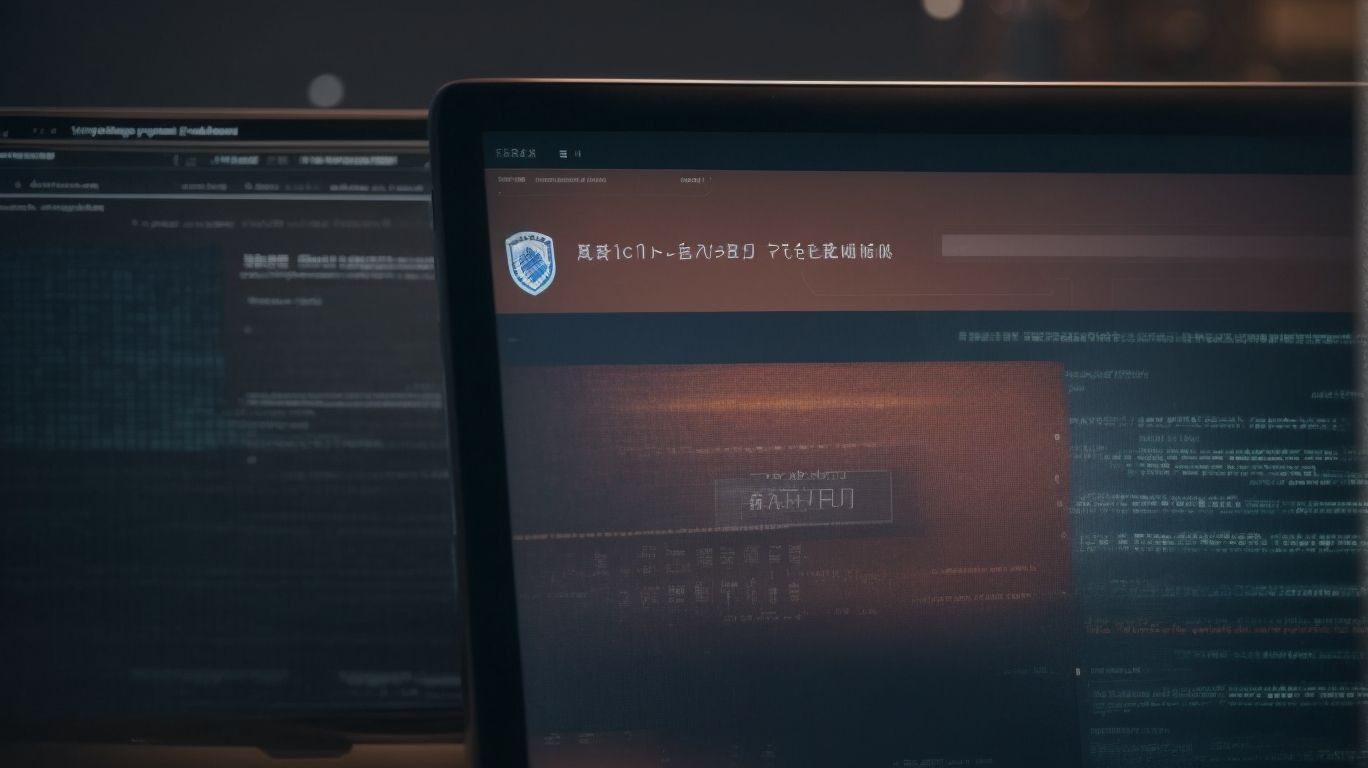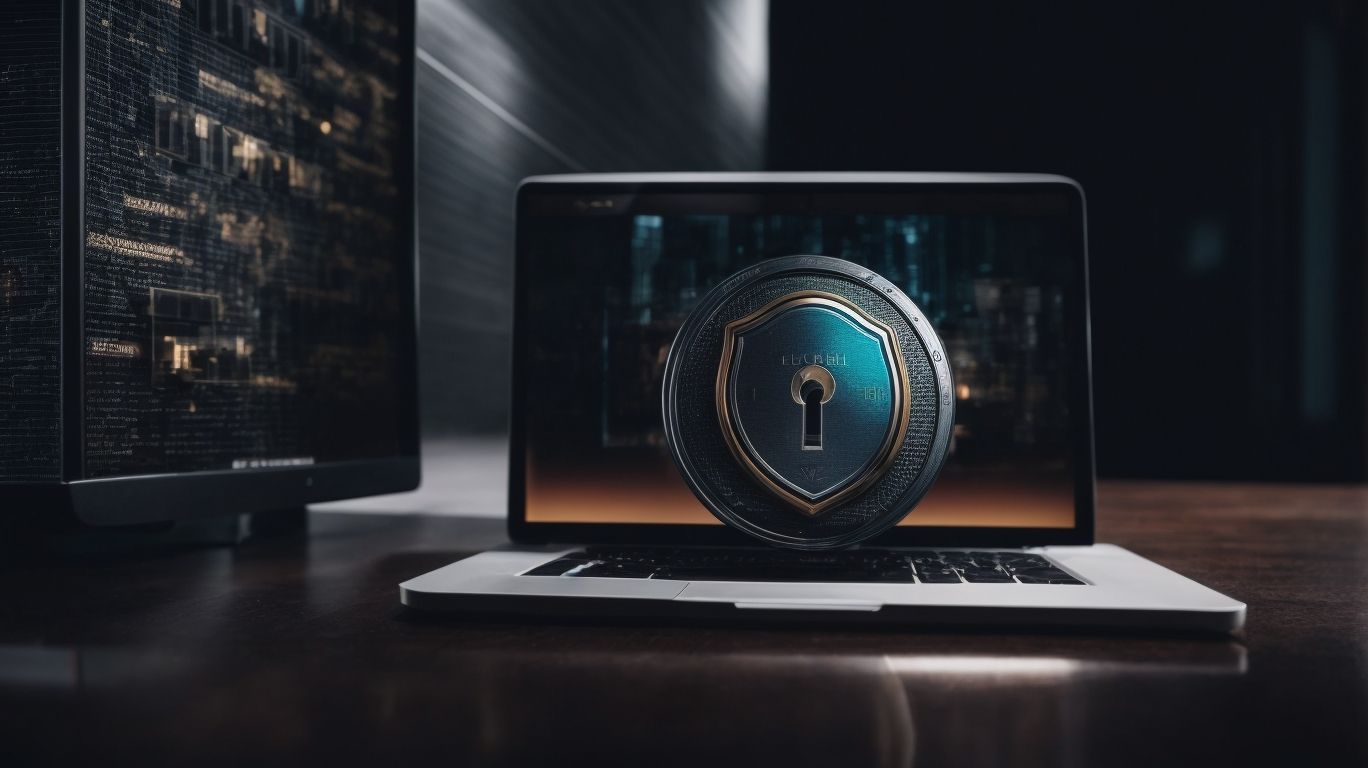Malware and hackers pose a significant threat to websites. There are different types of malware, such as viruses, trojans, worms, spyware, and ransomware, that cybercriminals use to attack and compromise websites.
In this article, we will explore the various types of malware and how hackers use them to attack websites. We will also discuss the signs of a hacked website and strategies to protect your website from malware and hackers. These include regular software updates, strong passwords, security plugins, regular backups, SSL encryption, and cybersecurity education.
If you want to ensure the security of your website, keep reading to learn how to safeguard it from potential threats.
What Is Malware?
Malware, short for malicious software, refers to any software designed with the intent to damage, disrupt, or gain unauthorized access to computer systems, networks, or user devices, posing significant security risks.
Malware, which includes viruses, worms, Trojans, ransomware, and spyware, can cause significant damage through various means of infiltration. From data theft and financial losses to system instability and privacy breaches, these malicious programs pose a significant threat to individuals and organizations alike.
As technology advances, cyber threats also evolve, making it difficult for security measures to keep up. This constant evolution requires individuals and organizations to remain vigilant and regularly update their defenses to protect against the ever-growing sophistication of malware and cyber attacks.
What Are the Different Types of Malware?
Malware encompasses various types, including viruses, trojans, worms, spyware, and ransomware, each with distinct malicious capabilities and methods of infiltration.
Viruses
Viruses are a type of malware designed to replicate and spread by attaching themselves to legitimate programs or files. This often causes damage to systems, compromises data integrity, and creates significant cybersecurity risks.
Computer viruses pose a constant threat to the stability and smooth functioning of computer systems. They can infect computers through various means, including email attachments, infected websites, or unauthorized downloads.
Once a virus infiltrates a system, it can cause system crashes, slow performance, and even total data loss. This highlights the critical importance of implementing robust security measures such as antivirus software, firewalls, and regular system updates to protect against these malicious attacks.
Trojans
Trojans, a prevalent form of malware, masquerade as legitimate software to deceive users into executing them, allowing unauthorized access to systems, data theft, and potential compromise of sensitive information.
This deceptive nature makes them particularly dangerous as they can infiltrate systems undetected.
Once inside a network, trojans can open backdoors for cybercriminals, enabling them to carry out a wide range of malicious activities, from spying on user activity to launching devastating attacks.
The potential risks span from financial losses and reputational damage to legal consequences, making it imperative for individuals and organizations to prioritize robust security measures.
Implementing effective cybersecurity protocols, including regular software updates, firewalls, and intrusion detection systems, is crucial in combatting the threat posed by trojan malware.
Worms
Worms are self-replicating malware that spread across networks, exploiting vulnerabilities to infect connected devices, disrupt operations, and create widespread cybersecurity threats.
Their network-based replication enables them to autonomously spread from one device to another, making them particularly insidious. Once infiltrated, worms can cause significant damages, such as data theft, network congestion, and system instability.
It is imperative for organizations and individuals to prioritize robust cybersecurity measures, including regular software updates, strong firewall protection, and employee awareness training, in order to mitigate the risks posed by these malicious entities.
Spyware
Spyware is a form of malware designed to covertly gather sensitive information, monitor user activities, and transmit data to unauthorized parties, posing significant privacy and security risks.
This intrusive software can collect a wide range of data, including browsing habits, login credentials, financial information, and even keystrokes typed on the keyboard. Once obtained, this data can be used for fraud, identity theft, and other malicious activities.
As spyware operates stealthily in the background, users are often unaware of its presence and the information it is siphoning. Consequently, the potential impact on individual privacy and security is substantial. This underscores the critical importance of implementing robust cybersecurity measures and maintaining vigilant awareness against these insidious threats.
Ransomware
Ransomware is a particularly destructive form of malware that encrypts files or locks users out of their systems, demanding ransom payments in exchange for restoring access, leading to severe disruptions and financial extortion.
This insidious threat employs sophisticated encryption methods to render vital data inaccessible, resulting in grave consequences for businesses and individuals.
The financial implications are staggering, with organizations facing large ransom demands while also grappling with the fallout of operational downtime and reputational damage.
To counter this menace, robust security measures and proactive strategies for data protection are imperative, underscoring the criticality of remaining vigilant and fortified against the evolving tactics of cybercriminals.
How Do Hackers Use Malware to Attack Websites?
Hackers leverage various forms of malware to launch targeted attacks on websites, exploiting vulnerabilities, compromising user data, and disrupting online services, necessitating proactive website security measures and cyber attack prevention strategies.
This calls for the implementation of robust security protocols, such as regular software updates, strong encryption, and multi-factor authentication.
Website owners should conduct routine vulnerability assessments and penetration testing to identify and address potential weak points before hackers exploit them.
Educating employees and users about phishing techniques and other common entry points for malware can also significantly enhance overall website security.
Maintaining a comprehensive backup system can help in mitigating the impact of a successful breach, ensuring minimal data loss and downtime.
What Are the Signs of a Hacked Website?
Identifying the signs of a hacked website is crucial for proactive threat mitigation, as indicators such as changes in website appearance, slow loading speeds, suspicious server log activity, and notifications from search engines or web hosts can signal potential security breaches. This necessitates robust website monitoring and intrusion detection measures.
A compromised website can exhibit various signs, such as unauthorized modifications to its content, redirects to unfamiliar external sites, or the presence of unknown files or scripts. These security breaches can result in increased traffic from malicious sources, causing slower loading times and potential data breaches.
Never ignore search engine warnings or notifications from web hosts about suspicious activity, as they indicate that hackers may have targeted your site. It’s crucial for website owners to invest in proactive monitoring and intrusion detection mechanisms to protect their online presence from these threats.
Changes in Website Appearance
Unexplained alterations to a website’s appearance, including unfamiliar content, defacements, or unauthorized visual changes, are indicative of a potential security compromise. This warrants immediate vulnerability scanning and website security assessments.
Visual indications of a security breach can greatly affect a website’s credibility, trustworthiness, and user experience. These can lead to a loss of customer confidence, damage to brand reputation, and financial losses.
It is crucial to prioritize vulnerability scanning to identify any weaknesses in the website’s defenses. Additionally, conducting thorough security assessments can help determine the extent of the breach. Remedial measures, such as patching vulnerabilities, enhancing access controls, and implementing robust security protocols, are necessary to mitigate the impact and prevent future breaches.
Slow Loading Speeds
Significantly reduced website loading speeds or frequent delays may signify a compromised website, necessitating immediate investigation, firewall deployment, and proactive website security measures to mitigate potential risks and disruptions.
This can lead to a negative user experience, loss of credibility, and potential financial implications for the website owner.
The deployment of a robust firewall, alongside regular performance optimization, is essential to safeguard against unauthorized access, data breaches, and other security threats.
Implementing proactive security measures, such as regular security audits, malware scanning, and patch management, can help prevent potential security vulnerabilities and maintain the website’s integrity.
Taking preemptive action to enhance website security and performance is crucial to protect both the website and its users from potential harm.
Suspicious Activity on Server Logs
Anomalies and unauthorized activities recorded in server logs, such as unusual access attempts, unauthorized modifications, or unexpected traffic patterns, are indicative of potential security breaches. This necessitates robust intrusion detection and server log monitoring mechanisms for prompt threat identification and mitigation.
These suspicious server log activities often serve as early indicators of website compromises, which makes it crucial for businesses to prioritize comprehensive security measures.
Intrusion detection systems play a pivotal role in promptly identifying and analyzing these anomalies, allowing organizations to take quick action to thwart potential threats.
Efficient log monitoring also aids in tracking and analyzing patterns of unauthorized or suspicious activities, contributing to the overall security posture of the website.
Rapid threat identification and mitigation are essential components in safeguarding web assets from cyber threats and attacks.
Notifications from Google or Your Web Host
Receiving notifications from search engines or web hosts regarding potentially harmful content, security concerns, or compromised website status necessitates immediate attention, threat intelligence analysis, and proactive remedial actions to address potential security risks and mitigate website compromises.
These notifications serve as crucial indicators of a compromised website’s status. They highlight the urgency of understanding the nature and extent of the threat through comprehensive threat intelligence analysis. This deeper insight is vital for determining the best course of action to contain the breach, protect sensitive data, and safeguard the website’s integrity. Taking immediate action based on this analysis is essential to prevent further damage and maintain trust with visitors. Proactive security measures become imperative to fortify the website against future threats, ensuring a resilient and secure online presence.
How Can You Protect Your Website from Malware and Hackers?
Safeguarding your website from malware and hacker threats requires a multi-faceted approach, encompassing measures such as regular software updates, robust security plugins, SSL encryption, access control mechanisms, and proactive website monitoring for timely threat identification and mitigation.
These essential security measures act as crucial layers of defense to fortify your website against potential vulnerabilities. Regular software updates not only enhance functionality but also patch security loopholes. Implementing top-tier security plugins can provide a solid shield against intrusion attempts and suspicious activities. Integrating SSL encryption ensures data transmitted through your website remains secure. Strict access control mechanisms bolster the authentication and authorization processes, reducing the risk of unauthorized access. Proactive website monitoring enables the quick detection of any anomalies, allowing swift mitigation of emerging threats.
Regularly Update Software and Plugins
Consistently updating website software and security plugins is vital for addressing known vulnerabilities, mitigating potential exploits, and strengthening overall website security posture. This necessitates proactive vulnerability scanning and patch management.
Regular software and plugin updates help in staying ahead of cyber threats and potential security breaches. By keeping software up to date, website owners can effectively minimize the risk of hackers exploiting known vulnerabilities. These updates often include security enhancements, helping to fortify defenses against emerging threats.
Proactive vulnerability scanning and patch management play a crucial role in identifying and addressing potential weaknesses before they can be exploited by malicious actors, ensuring a more resilient and secure website environment. As cyber threats continue to evolve, the importance of maintaining updated software and plugins cannot be overstated.
Use Strong Passwords
Implementing strong, unique passwords for website access, administrative privileges, and user accounts forms a critical component of access control and website security. This is essential for safeguarding sensitive information and preventing unauthorized access.
Necessitating robust password protection policies and user authentication mechanisms helps prevent brute-force attacks, ensuring that only authorized users can access the website’s backend or sensitive data. By enforcing minimum complexity requirements, such as a mix of upper and lower case letters, numbers, and special characters, websites can significantly reduce the risk of password guessing or dictionary attacks.
Regular password updates and multi-factor authentication further enhance the security posture of the website, mitigating the potential impact of data breaches and unauthorized system access.
Install Security Plugins
Deploying comprehensive security plugins is crucial for protecting websites. These plugins serve as a web application firewall, intrusion detection system, and malware scanner, continuously monitoring and filtering incoming traffic. They also detect and stop malicious activities and provide alerts for suspicious behavior. In addition, these plugins integrate secure coding practices such as input validation and secure authentication mechanisms. This helps prevent common vulnerabilities like cross-site scripting and SQL injection. The deployment of security plugins highlights the importance of proactive measures against evolving cyber threats and emphasizes the need for a multi-layered defense strategy for comprehensive website protection.
Backup Your Website Regularly
Regularly backing up your website’s data and content is essential for rapid recovery from potential compromises, data loss prevention, and proactive malware removal. This necessitates robust data backup strategies and comprehensive website management practices.
It is crucial to safeguard your website from a variety of potential risks, including security breaches, hardware failures, software glitches, and human errors.
Without regular backups, your website could be vulnerable to irreversible data loss, jeopardizing your online presence and business operations. By implementing a structured backup routine, you can ensure that your website’s critical information is securely stored and readily accessible for restoration in the event of unforeseen incidents. This not only provides peace of mind but also allows you to maintain seamless continuity and minimize downtime, bolstering your overall data protection and recovery preparedness.
Use SSL Encryption
Implementing SSL encryption for your website establishes a secure communication protocol, safeguards user data, and fosters trust in online transactions. This highlights the significance of encryption for website security and user privacy protection.
SSL encryption plays a crucial role in protecting sensitive information transmitted between a user’s browser and a website server. This includes login credentials, payment details, and personal data, which are all kept confidential and safe from interception by malicious actors.
By utilizing SSL, websites are better equipped to defend against cyber threats such as man-in-the-middle attacks and unauthorized access to sensitive information. This added layer of protection enhances the overall security of the website, creating a safer and more trustworthy online environment for users.
Monitor Your Website for Suspicious Activity
Proactive monitoring of your website for suspicious activity, unauthorized access attempts, and potential security breaches is crucial for timely threat identification, malware removal, and informed decision-making. This necessitates robust threat intelligence analysis and proactive security measures.
By adopting proactive monitoring, website owners can effectively detect and mitigate potential threats before they escalate into serious security incidents. This approach enables swift response to suspicious behavior, aiding in mitigating vulnerabilities and preventing unauthorized access.
Prompt malware removal safeguards the website’s integrity and user data. Leveraging threat intelligence analysis allows for a deeper understanding of emerging threats, empowering website owners to fortify their defenses and stay ahead of potential risks.
Educate Yourself and Your Team on Cybersecurity Best Practices
Fostering a culture of cyber hygiene and promoting cybersecurity best practices within your team is essential for enhancing overall website security. This includes minimizing vulnerabilities and cultivating a proactive security posture. It’s crucial to emphasize the importance of security protocols and access control measures.
This approach ensures that individuals within the organization are equipped with the necessary knowledge to identify and mitigate potential security threats. It also helps safeguard sensitive data and prevent unauthorized access.
By integrating regular training sessions on cybersecurity awareness and implementing strong authentication methods, companies can significantly reduce the likelihood of cyber-attacks and data breaches. This fortifies their digital infrastructure against evolving digital threats.
Frequently Asked Questions
How do I know if my website is at risk of malware and hacker attacks?
There are a few signs that your website may be at risk, such as unusual activity or changes on your website, a sudden decrease in website traffic, or strange pop-ups or redirects. It is important to regularly monitor your website for any suspicious activity.
What are some ways to protect my website from malware and hackers?
There are several steps you can take to protect your website, including regularly updating your software and plugins, using strong and unique passwords, implementing firewalls and security plugins, and backing up your website’s data regularly.
What is malware and how can it affect my website?
Malware is malicious software designed to harm or gain unauthorized access to your website or computer. It can cause your website to crash, steal sensitive information, or redirect visitors to harmful websites. It is important to regularly scan your website for malware and remove any detected threats.
How do hackers target websites?
Hackers use a variety of methods to target websites, such as SQL injections, cross-site scripting, and brute force attacks. They may also exploit vulnerabilities in outdated software or plugins. It is important to stay informed about the latest hacking techniques and regularly update your website’s security measures.
What should I do if my website has been hacked?
If your website has been hacked, it is important to act quickly. First, take your website offline to prevent further damage. Then, scan your website for malware and remove any threats. Change all passwords and update all software and plugins. Finally, reach out to your web hosting provider and consider hiring a professional to help secure your website.
Is it possible to completely prevent my website from being hacked?
Unfortunately, no website is completely immune to hacking attempts. However, by implementing strong security measures and regularly updating and monitoring your website, you can significantly reduce the risk of a successful attack. It is also important to have a plan in place in case your website does get hacked.




